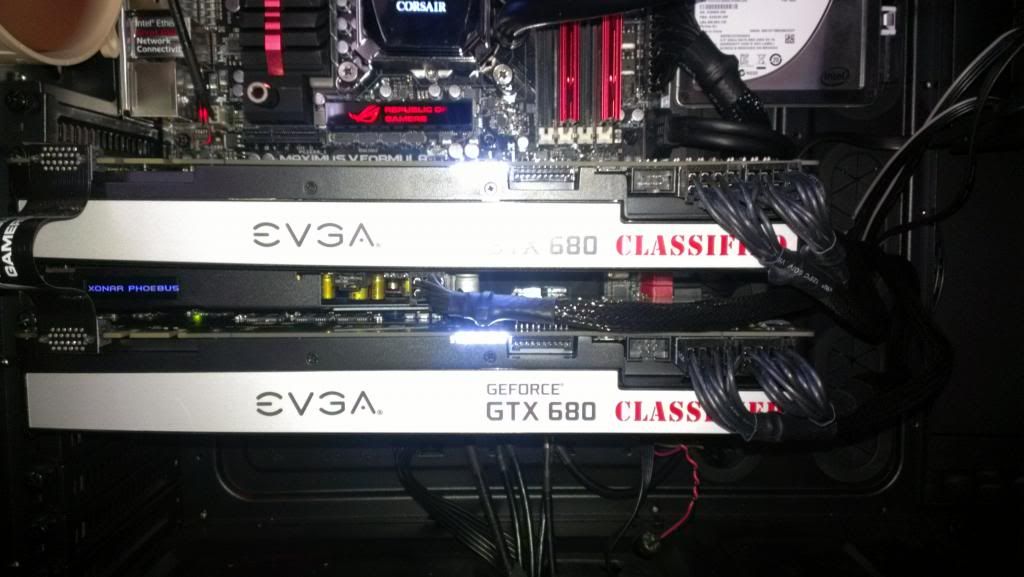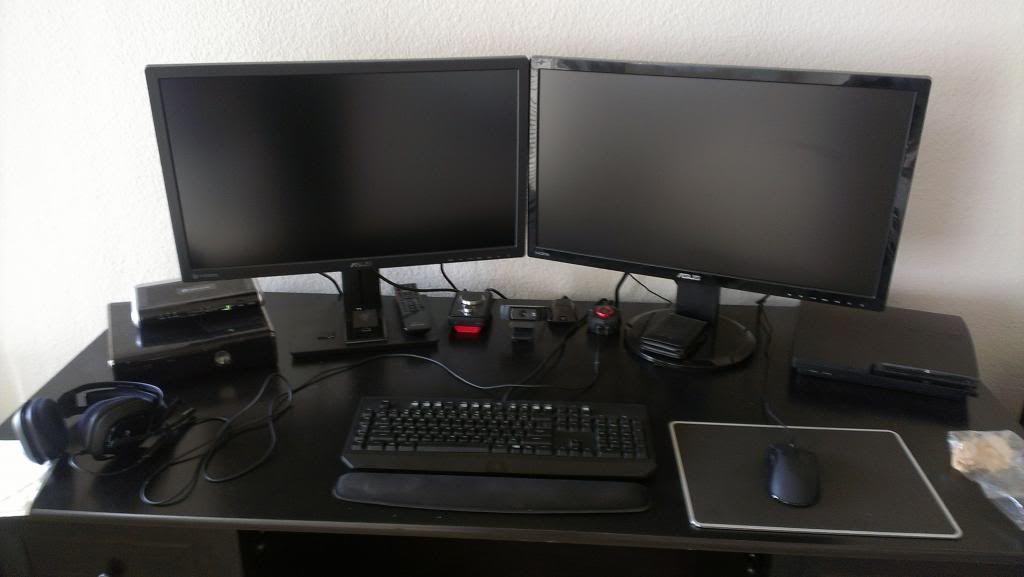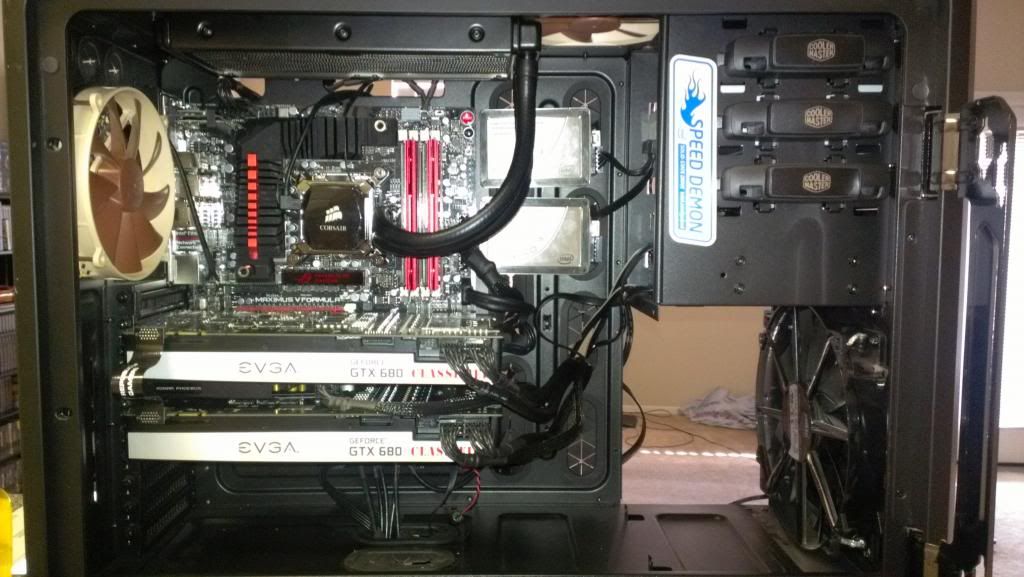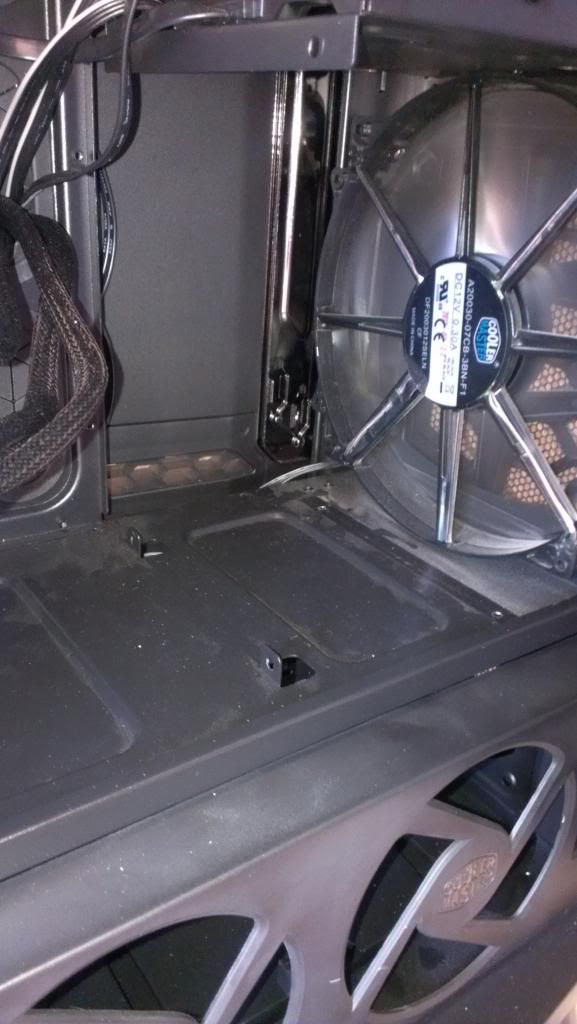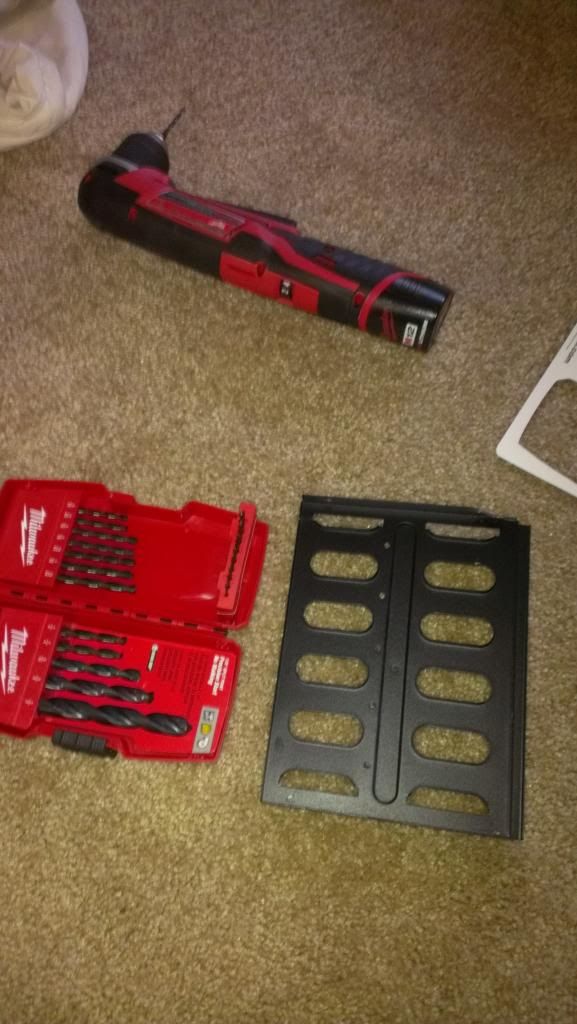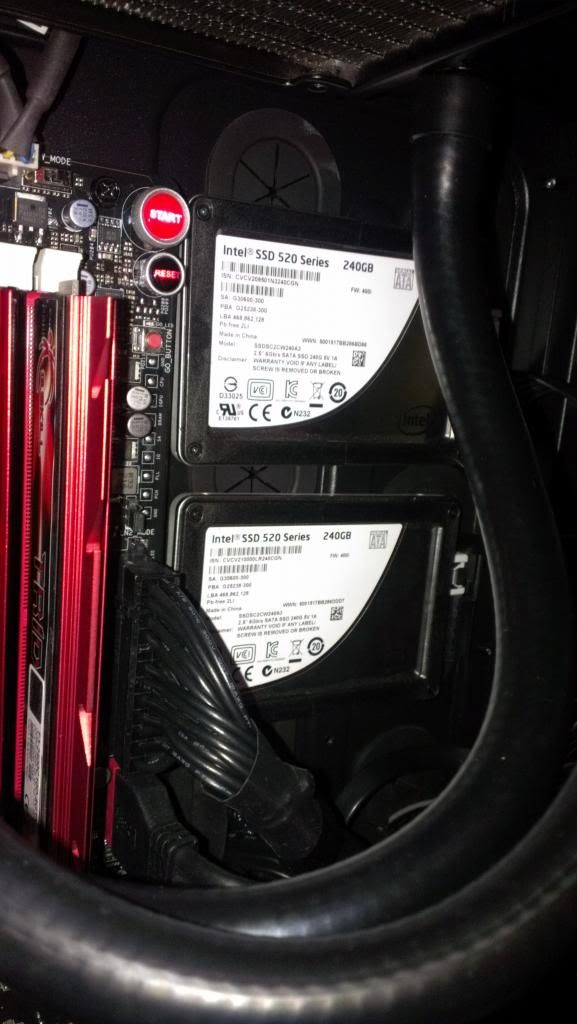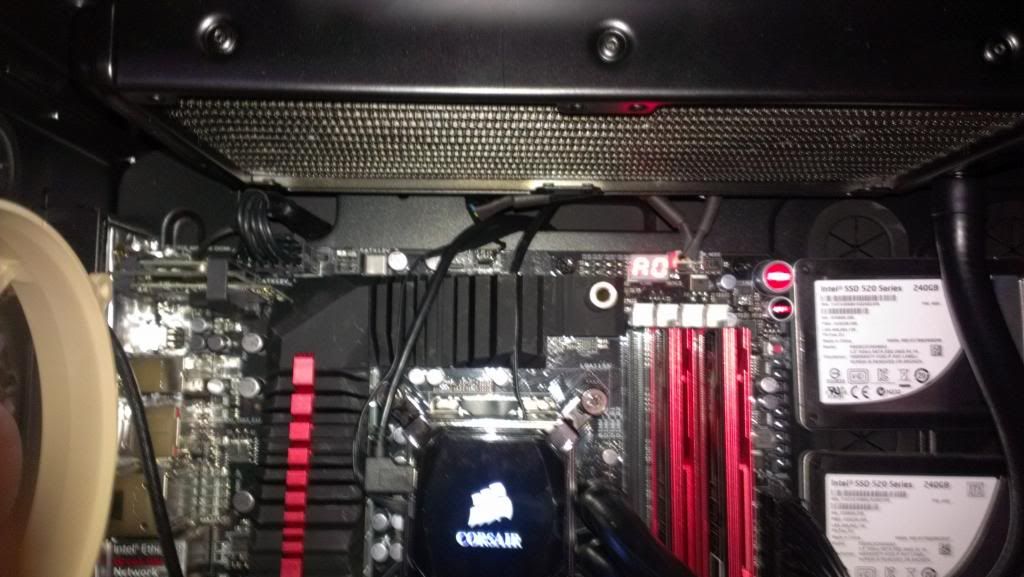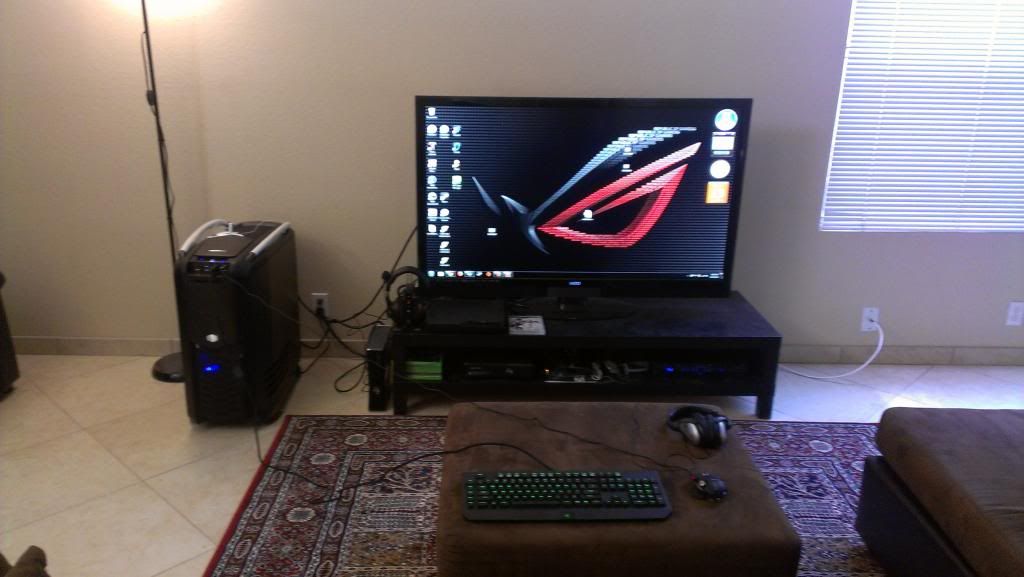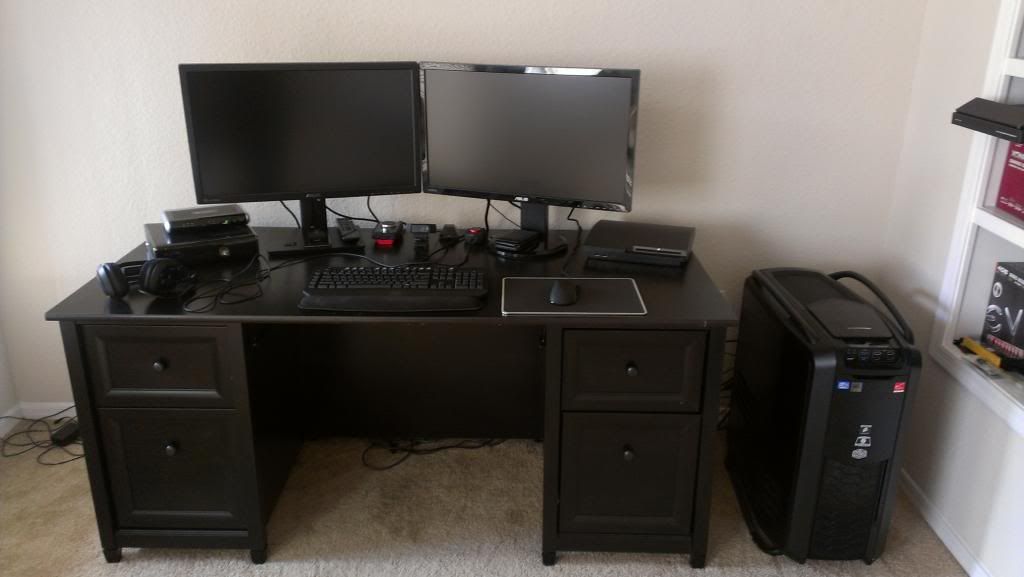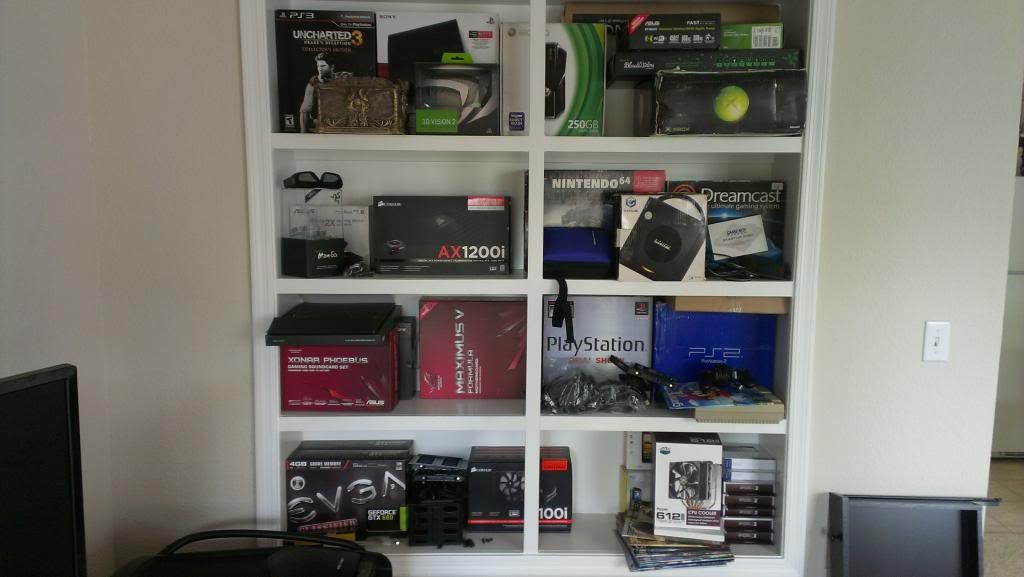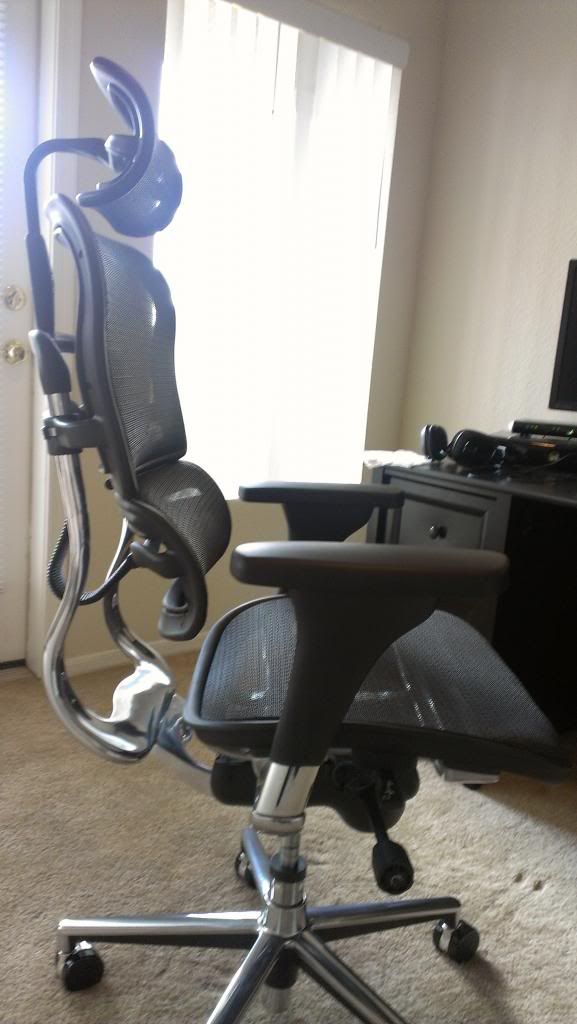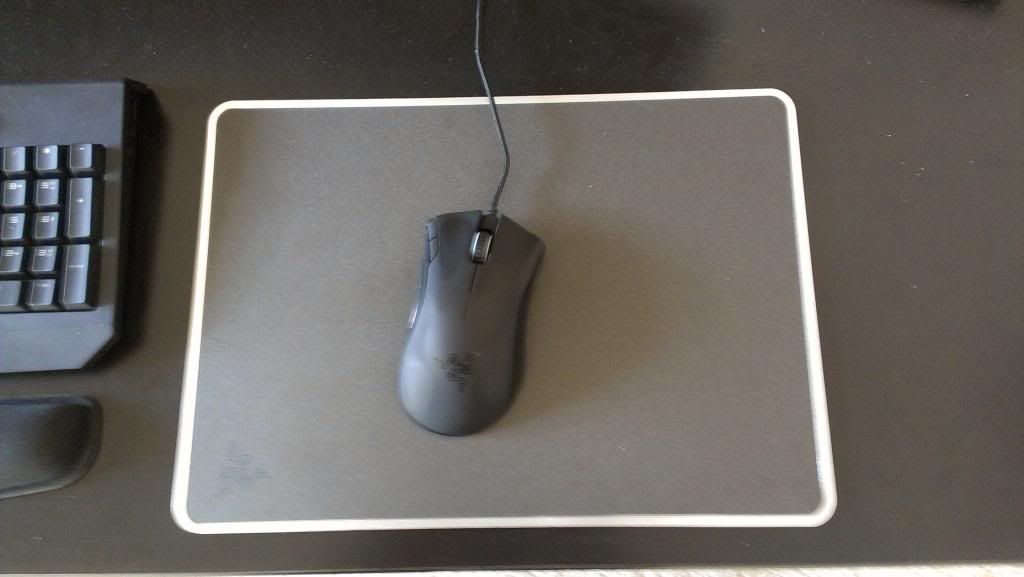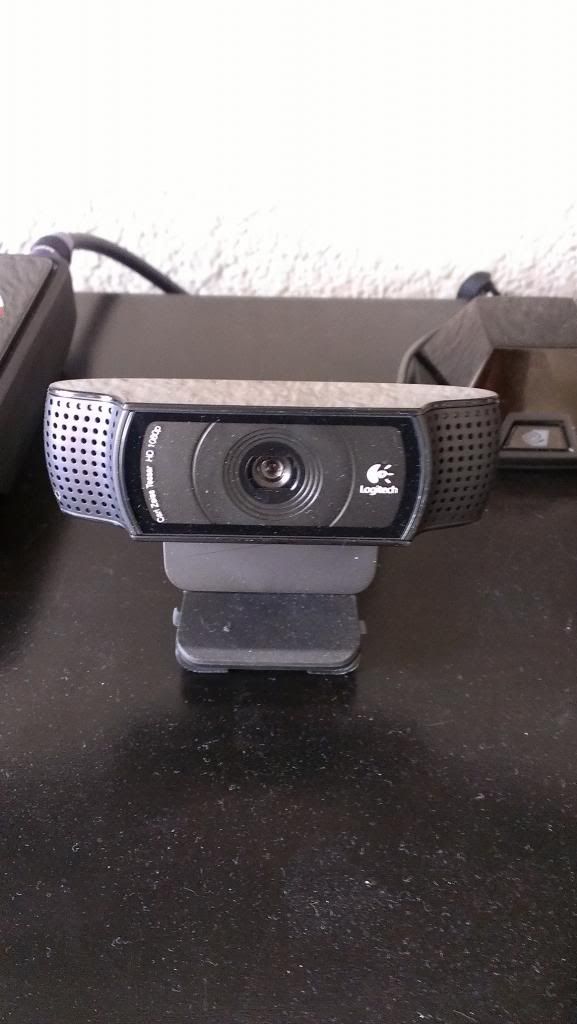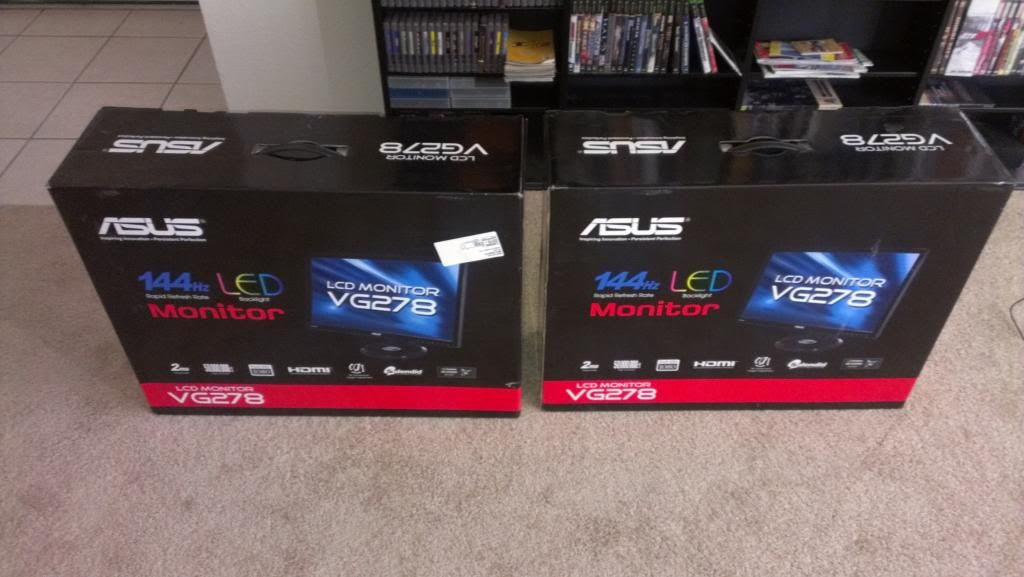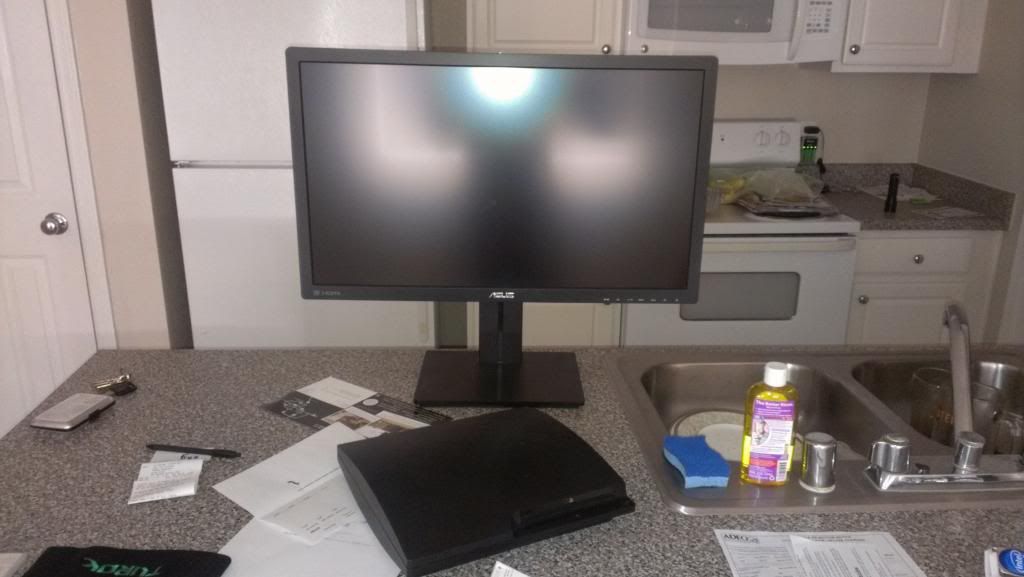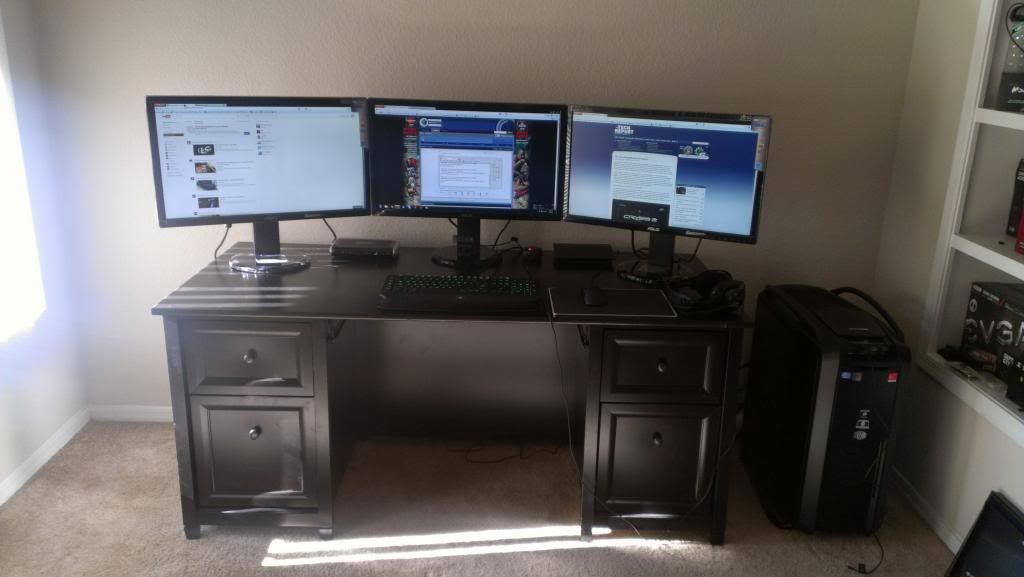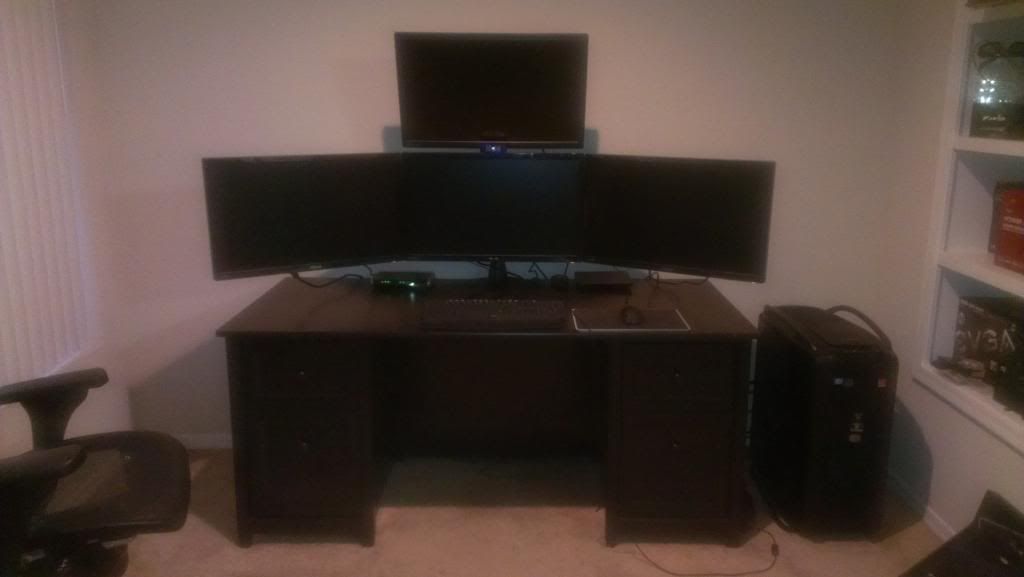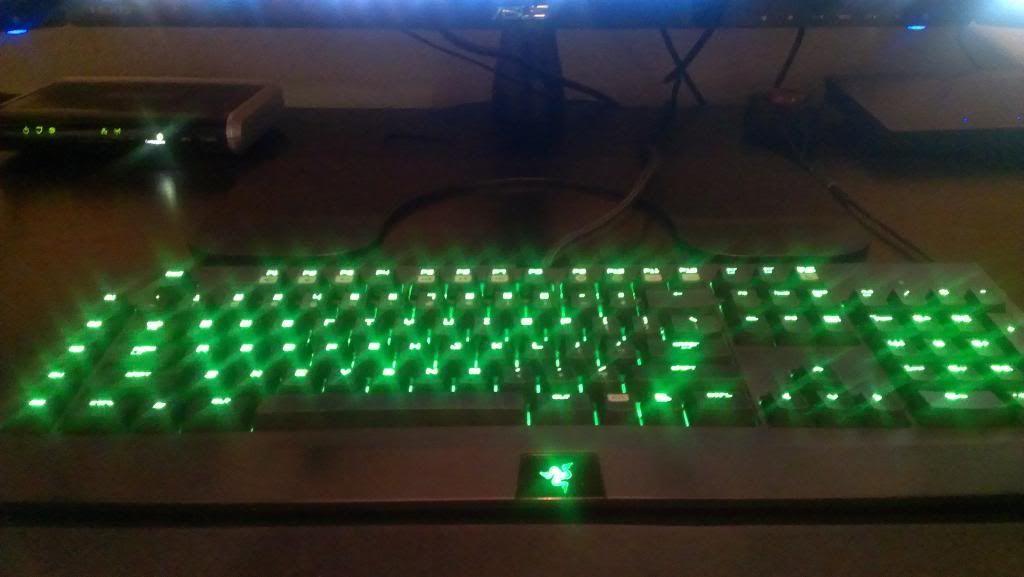[BEGIN TRANSMISSION]
Hello once again everybody. It's been a solid two months since my initial post in the rig gallery. Yes, a long time ago. It is time for a much overdue update on my build; several things have been added since then. For those of you that have never seen my build you can see it here.
In my initial post I went over foundation of my rig; the essentials needed for a complete working system short of the things that I have added recently, those being a graphics card, sound card, a [proper] display, and a headset to utilize the full potential of that new sound card. As usual, be prepared for somewhat of a long explanation on what components I chose and the reasons behind why I chose them. Without further ado then...
Graphics card: EVGA GTX 680 Classified
(My my I'll get flamed for this one :mellow Ok firstly, I did have an open dialogue with several of you about what graphics card I should choose for my system and the majority of you recommended the GTX 670 over the 680, your reasons being the minimal performance difference versus the price difference. That being said I took your input into consideration but in the end I chose this because, for one, it meets all of the specifications that I was looking for; those being 1, a larger-than-2GB frame buffer (4GB in this case) , 2, a custom PCB for improved power delivery and thus higher overclocking potential, and 3, watercooling (there will be a Hydro Copper block available for this card), again, for increased overclocking potential. I get the best of all of the those worlds in this card. Secondly I chose this over a GTX 670 because it just aligns better with the other high-end components in my rig. Just think about it. You wouldn't buy a Mercedes Benz with a cheap four-cylinder engine now would you? Oh yeah, a free copy of Borderlands 2 is a nice added bonus to top things off.
Ok firstly, I did have an open dialogue with several of you about what graphics card I should choose for my system and the majority of you recommended the GTX 670 over the 680, your reasons being the minimal performance difference versus the price difference. That being said I took your input into consideration but in the end I chose this because, for one, it meets all of the specifications that I was looking for; those being 1, a larger-than-2GB frame buffer (4GB in this case) , 2, a custom PCB for improved power delivery and thus higher overclocking potential, and 3, watercooling (there will be a Hydro Copper block available for this card), again, for increased overclocking potential. I get the best of all of the those worlds in this card. Secondly I chose this over a GTX 670 because it just aligns better with the other high-end components in my rig. Just think about it. You wouldn't buy a Mercedes Benz with a cheap four-cylinder engine now would you? Oh yeah, a free copy of Borderlands 2 is a nice added bonus to top things off.
Display: ASUS VG278HE
Again I have had an open dialogue with some of you about this subject matter as well. Initially I was going to choose an IPS display, BUT, considering that I primarily use my rig for gaming I had to readjust my priorities somewhat. I will in the near future get an IPS display or three but for now it comes down to having the right tool for the job so I took a step backward in my opinion and opted for this TN panel.
In reality this is not really a step backward. Between this display and its older sibling, the VG278H, this one has two things going for it. For one the VG278HE does not have that crappy 3D emitter built in which many have said comes with defects. For me at least, and I am sure many of you will agree with me, that is a plus. Improves the aesthetics and reduces the price. Secondly this display is NOT 120 Hz, but 144 Hz. One hundred and forty-four hertz! While one will not readily be able to tell the difference between 120 Hz and 144 Hz, it is like night and day better for me coming from a console gaming background or for anybody who games at 60 Hz. This is the closest thing under the sun right now to a CRT to put it simply.
For all that this display can do, at the end of the day it is a 27" TN panel with a resolution of only 1920x1080. And as such I would only ever use it for fast-paced gaming. The color depth and viewing angles are still noticeably inferior to even a garden variety IPS panel (although TN panels have come a long way in those departments) and I can discern individual pixels from a slightly-closer-than-normal seating distance. I am presently looking at 27 in panels with WQHD resolution for use in a surround setup.
Sound card: ASUS Xonar Phoebus
When it comes to audio, I consider it to have an equal impact as the graphics in the overall gaming experience. While the onboard sound hardware on my motherboard of choice (ASUS Maximus V Formula) is almost discreet-class in terms of audio quality, it does not give the user much control of the audio parameters that a dedicated solution does. And so begins my search for a sound card.
In the world of PC sound cards there are only two players in that space that have decent offerings: ASUS and Creative. Looking at Creative's X-Fi Titanium, the hardware is for the most part solid, but the drivers definitely are not in modern times, and thus, have widespread problems. No use in getting the right tool for the job if it doesn't work. Then I look at ASUS Xonar line. The DX, DGX, and DSX get the job done sure, but looking at those cards they're naked and subject to electromagnetic interference from other sources inside of a computer case. Oh and those products have been out for some time as well. The STX has shielding, but is more ideal for audiophiles and music enthusiasts and less so for gamers. Enter the Xonar Phoebus. EMI shielding? Check. 7.1 audio? Check. Drivers and software optimized for gaming and without the issues that Creative has? Check.
Gaming headset: Astro A40 wired headset.
While this is by no means an integral part of the system build, I feel it does deserve mentioning. When it comes to getting good quailty audio there can be no compromises. Every component of the audio, from your source material (LP, CD, DVD, digital or whatnot) to all of the hardware in your system (turntable, CD player, computer, etc, DAC, amplifier, speakers or headphones and even the cabling) has to be up to snuff in order to get the best possible experience.
In order to use my sound card to its fullest potential the headphones have to be just as good or better. When choosing my headset there were some things to consider. First, it had to be wired. The headset that I use with my consoles is Turtle Beach PX5, which is wireless. As you very well know any wireless signal can be subject to interference from a variety of sources; in this case my wireless router since it works on 2.4 GHz band. I get this awful crackling noise that quickly becomes unbearable hence my decision to go wired once again. Secondly it has to be comfortable to wear for long periods of time. Again my reasoning for this is based on my experience with the PX5. I could maybe wear them for an hour before I begin to feel discomfort. Thirdly, the headset can't have any built-in audio processing of its own; it would completely defeat the purpose of getting a sound card in the first place. The Corsair Vengeance series of headsets and any such product that uses a USB connection comes to mind. Last, but not least, it has to have the best sound quality on its own merit while still having a built-in mic. In the end there were only two headsets to choose from: Sennheiser PC360 and Astro A40. The PC360, unfortunately, does not play well with large heads and, thus, would be likely to cause me comfort issues. The decision from there was an easy one.
Fans: 5x Noctua NF-F12 120mm and 1x Noctua NF-P14 140mm fans
Needed to change the stock fans that came with the Cosmos II. Also wanted to lay some groundwork for watercooling when I get around to it as well. So given that information, the fans had to have a high static pressure. The only problem I ran into here was choosing from the many offerings out there, so I made it easy on myself and went with the best fans my money could buy and Noctua is highly regarded as being one the best when it comes to fans. I only wish they came in black, but whatever.
I am presently using them as case fans until I get a watercooling loop installed. The Cosmos II case can fit 600mm of radiator for sure (possibly more), hence my decision to get five of them.
Conclusion
If you have read this far my many thanks for your patience in reading my lengthy update. ^_^ There will be more updates to come still as this is a constantly evolving project (pictures will come shortly as well). There will be an additional graphics card for SLI, watercooling, and the aforementioned IPS displays in surround in the coming months. Speaking of which, I am considering the Dell U2713HM and the ASUS PB278Q at this point in time. If any of you have used them tell me what you think about them.
I haven't been very active on forums lately; my apologies. I'll ramp up my activity again and answer any questions that anybody has about my build or my opinions on things or whatnot.
XANADV signing off
[END TRANSMISSION]
Hello once again everybody. It's been a solid two months since my initial post in the rig gallery. Yes, a long time ago. It is time for a much overdue update on my build; several things have been added since then. For those of you that have never seen my build you can see it here.
In my initial post I went over foundation of my rig; the essentials needed for a complete working system short of the things that I have added recently, those being a graphics card, sound card, a [proper] display, and a headset to utilize the full potential of that new sound card. As usual, be prepared for somewhat of a long explanation on what components I chose and the reasons behind why I chose them. Without further ado then...
Graphics card: EVGA GTX 680 Classified
(My my I'll get flamed for this one :mellow
Display: ASUS VG278HE
Again I have had an open dialogue with some of you about this subject matter as well. Initially I was going to choose an IPS display, BUT, considering that I primarily use my rig for gaming I had to readjust my priorities somewhat. I will in the near future get an IPS display or three but for now it comes down to having the right tool for the job so I took a step backward in my opinion and opted for this TN panel.
In reality this is not really a step backward. Between this display and its older sibling, the VG278H, this one has two things going for it. For one the VG278HE does not have that crappy 3D emitter built in which many have said comes with defects. For me at least, and I am sure many of you will agree with me, that is a plus. Improves the aesthetics and reduces the price. Secondly this display is NOT 120 Hz, but 144 Hz. One hundred and forty-four hertz! While one will not readily be able to tell the difference between 120 Hz and 144 Hz, it is like night and day better for me coming from a console gaming background or for anybody who games at 60 Hz. This is the closest thing under the sun right now to a CRT to put it simply.
For all that this display can do, at the end of the day it is a 27" TN panel with a resolution of only 1920x1080. And as such I would only ever use it for fast-paced gaming. The color depth and viewing angles are still noticeably inferior to even a garden variety IPS panel (although TN panels have come a long way in those departments) and I can discern individual pixels from a slightly-closer-than-normal seating distance. I am presently looking at 27 in panels with WQHD resolution for use in a surround setup.
Sound card: ASUS Xonar Phoebus
When it comes to audio, I consider it to have an equal impact as the graphics in the overall gaming experience. While the onboard sound hardware on my motherboard of choice (ASUS Maximus V Formula) is almost discreet-class in terms of audio quality, it does not give the user much control of the audio parameters that a dedicated solution does. And so begins my search for a sound card.
In the world of PC sound cards there are only two players in that space that have decent offerings: ASUS and Creative. Looking at Creative's X-Fi Titanium, the hardware is for the most part solid, but the drivers definitely are not in modern times, and thus, have widespread problems. No use in getting the right tool for the job if it doesn't work. Then I look at ASUS Xonar line. The DX, DGX, and DSX get the job done sure, but looking at those cards they're naked and subject to electromagnetic interference from other sources inside of a computer case. Oh and those products have been out for some time as well. The STX has shielding, but is more ideal for audiophiles and music enthusiasts and less so for gamers. Enter the Xonar Phoebus. EMI shielding? Check. 7.1 audio? Check. Drivers and software optimized for gaming and without the issues that Creative has? Check.
Gaming headset: Astro A40 wired headset.
While this is by no means an integral part of the system build, I feel it does deserve mentioning. When it comes to getting good quailty audio there can be no compromises. Every component of the audio, from your source material (LP, CD, DVD, digital or whatnot) to all of the hardware in your system (turntable, CD player, computer, etc, DAC, amplifier, speakers or headphones and even the cabling) has to be up to snuff in order to get the best possible experience.
In order to use my sound card to its fullest potential the headphones have to be just as good or better. When choosing my headset there were some things to consider. First, it had to be wired. The headset that I use with my consoles is Turtle Beach PX5, which is wireless. As you very well know any wireless signal can be subject to interference from a variety of sources; in this case my wireless router since it works on 2.4 GHz band. I get this awful crackling noise that quickly becomes unbearable hence my decision to go wired once again. Secondly it has to be comfortable to wear for long periods of time. Again my reasoning for this is based on my experience with the PX5. I could maybe wear them for an hour before I begin to feel discomfort. Thirdly, the headset can't have any built-in audio processing of its own; it would completely defeat the purpose of getting a sound card in the first place. The Corsair Vengeance series of headsets and any such product that uses a USB connection comes to mind. Last, but not least, it has to have the best sound quality on its own merit while still having a built-in mic. In the end there were only two headsets to choose from: Sennheiser PC360 and Astro A40. The PC360, unfortunately, does not play well with large heads and, thus, would be likely to cause me comfort issues. The decision from there was an easy one.
Fans: 5x Noctua NF-F12 120mm and 1x Noctua NF-P14 140mm fans
Needed to change the stock fans that came with the Cosmos II. Also wanted to lay some groundwork for watercooling when I get around to it as well. So given that information, the fans had to have a high static pressure. The only problem I ran into here was choosing from the many offerings out there, so I made it easy on myself and went with the best fans my money could buy and Noctua is highly regarded as being one the best when it comes to fans. I only wish they came in black, but whatever.
I am presently using them as case fans until I get a watercooling loop installed. The Cosmos II case can fit 600mm of radiator for sure (possibly more), hence my decision to get five of them.
Conclusion
If you have read this far my many thanks for your patience in reading my lengthy update. ^_^ There will be more updates to come still as this is a constantly evolving project (pictures will come shortly as well). There will be an additional graphics card for SLI, watercooling, and the aforementioned IPS displays in surround in the coming months. Speaking of which, I am considering the Dell U2713HM and the ASUS PB278Q at this point in time. If any of you have used them tell me what you think about them.
I haven't been very active on forums lately; my apologies. I'll ramp up my activity again and answer any questions that anybody has about my build or my opinions on things or whatnot.
XANADV signing off
[END TRANSMISSION]
Last edited:

